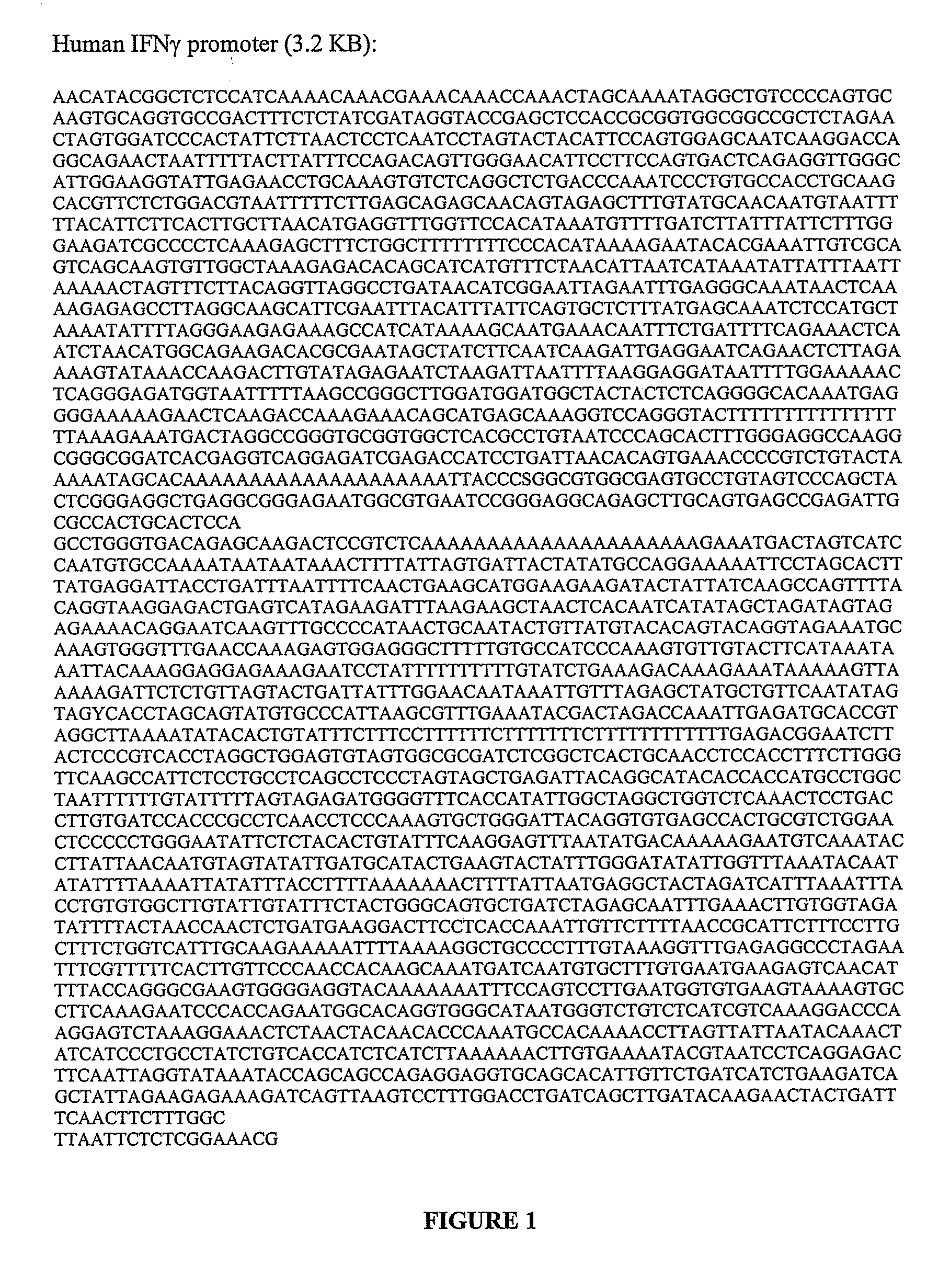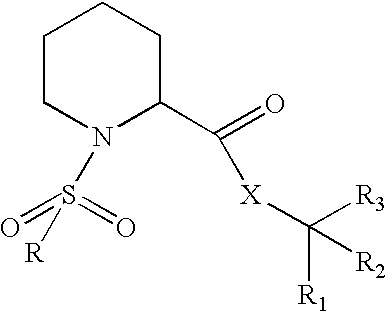N-sulfonylpipecolic acid derivative FKBP binding composition and pharmaceutical use thereof
a technology of n-sulfonylpipecolic acid and binding composition, which is applied in the direction of drug compositions, biocide, heterocyclic compound active ingredients, etc., can solve the problems of compromising neuronal function or survival, poor current therapy, and no satisfactory treatment for these diseases
- Summary
- Abstract
- Description
- Claims
- Application Information
AI Technical Summary
Benefits of technology
Problems solved by technology
Method used
Image
Examples
example 1
[0392]
1
(S)-1-(3-Trifluoromethyl-benzenesulfonyl)-piperidine-2-carboxylic acid [(S)-1-(4-dimethylamino-phenylcarbamoyl)-2-(4-methoxy-phenyl)-ethyl]-amide
1a)
(S)-1-(3-Trifluoromethyl-benzenesulfonyl)-piperidine-2-carboxylic acid benzyl ester
[0393]To 4.0 g (15.64 mmol or millimoles) of (S)-piperidine-2-carboxylic acid benzyl ester hydrochloride and 3.15 g (31.28 mmol) of triethylamine in (200 ml) was added 4.21 g (17.20 mmol) of 3-trifluoromethylbenzenesulfonyl chloride. The mixture was stirred at room temperature for 1 hour. The reaction mixture was then washed with water, brine and dried (sodium sulfate). Chromatography on silica gel, eluting with dichloromethane provided 6.7 g (15.64 mmol) of (S)-1-(3-Trifluoromethyl-benzenesulfonyl)-piperidine-2-carboxylic acid benzyl ester. LCMS (M+H): m / z 428, retention time 3.9 min.
1b)
(S)-1-(3-Trifluoromethyl-benzenesulfonyl)-piperidine-2-carboxylic acid
[0394]To 12.20 g (28.85 mmol) of N-3-trifluoromethyl-(S)-piperidine-2-carboxylic acid benzyl e...
example 2
[0399]
2
(S)-1-(3-Trifluoromethyl-benzenesulfonyl)-piperidine-2-carboxylic acid [(S)-2-(4-acetyl-phenyl)-1-(4-ethoxy-phenylcarbamoyl)-ethyl]-amide
[0400]The title compound was prepared from carboxylic acid compound 15a and 4-ethoxyaniline employing the procedure used to synthesize compound 15. 1H NMR (300 MHz, CDCl3): 1.09-1.42 (m, 8H); 2.04-2.12 (bd, 1H); 2.51-2.54 (m, 1H); 2.59 (s, 3H); 3.22 (dd, 1H); 3.42 (dd, 1H); 3.58-3.62 (bd, 1H); 4.00 (q, 2H); 4.37 (b, 1H); 4.86 (q, 1H); 6.84 (d, 1H); 6.90 (d, 1H); 7.38 (d, 4H); 7.70 (t, 1H); 7.86-7.94 (m, 4H); 8.00 (d, 1H); 8.08 (s, 1H).
example 3
[0401]
3. (S)-1-(3-Trifluoromethyl-benzenesulfonyl)-piperidine-2-carboxylic acid [(S)-1-(4-morpholin-4-yl-phenylcarbamoyl)-2-(4-trifluoromethyl-phenyl)-ethyl]-amide
[0402]The title compound was prepared from the corresponding 4-(trifluoromethyl)phenylalanine carboxylic acid derivative and 4-morpholinoaniline as described for step (1f). 1H NMR (400 MHz, CDCl3): 0.95-1.45 (m, 5H); 2.16-2.05 (bd, 1H); 2.35 (dd, 1H); 3.02-3.20 (m, 5H); 3.41-3.60 (m, 2H); 3.84-3.87 (m, 4H); 4.36 (b, 1H); 4.80-4.90 (m, 1H); 6.85-6.88 (m, 3H); 7.38-7.43 (m, 4H); 7.60 (d, 2H); 7.70 (t, 1H); 7.88 (d, 1H); 7.95 (s, 1H); 8.01 (d, 1H); 8.08 (s, 1H).
PUM
| Property | Measurement | Unit |
|---|---|---|
| extension of time | aaaaa | aaaaa |
| volume | aaaaa | aaaaa |
| temperature | aaaaa | aaaaa |
Abstract
Description
Claims
Application Information
 Login to View More
Login to View More - R&D
- Intellectual Property
- Life Sciences
- Materials
- Tech Scout
- Unparalleled Data Quality
- Higher Quality Content
- 60% Fewer Hallucinations
Browse by: Latest US Patents, China's latest patents, Technical Efficacy Thesaurus, Application Domain, Technology Topic, Popular Technical Reports.
© 2025 PatSnap. All rights reserved.Legal|Privacy policy|Modern Slavery Act Transparency Statement|Sitemap|About US| Contact US: help@patsnap.com



